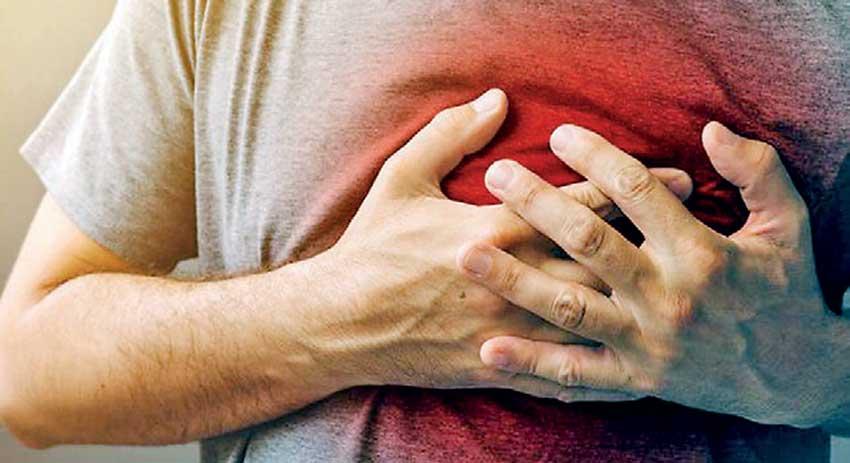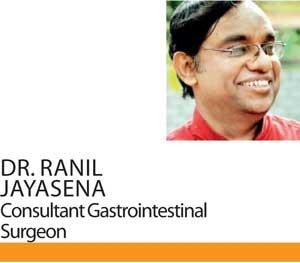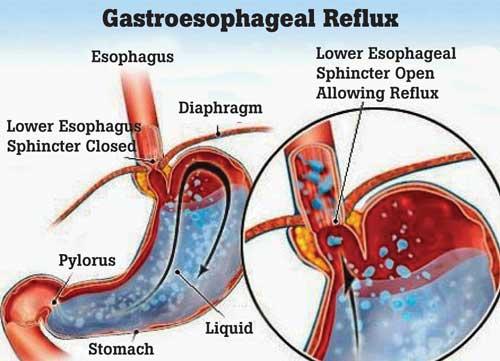04 Sep 2020 - {{hitsCtrl.values.hits}}

 What happens when something pushed down keeps getting pushed back up? This uncomfortable mechanism is exactly what happens when you have ‘Gastro-oesophageal reflux disease’. The Health Capsule spoke to Consultant Gastrointestinal Surgeon Doctor Ranil Jayasena, in order to shed light on this irritating disease.
What happens when something pushed down keeps getting pushed back up? This uncomfortable mechanism is exactly what happens when you have ‘Gastro-oesophageal reflux disease’. The Health Capsule spoke to Consultant Gastrointestinal Surgeon Doctor Ranil Jayasena, in order to shed light on this irritating disease.
“Gastro-oesophageal reflux disease occurs when contents in the stomach flow back into the oesophagus. Usually, this occurrence is prevented by a sphincter known as the lower oesophageal sphincter. However sometimes when it weakens, the contents get into the lower oesophagus,” Dr Jayasena explained.

Dr Jayasena mentioned that it could be bile, acid or food contents with bile or acid that is backed into the oesophagus. This is known as ‘regurgitation’. This can sometimes also cause gas to exit through the valve. This is known as ‘eructation’.
Gastro-oesophageal reflux disease is caused due to the weakening of the lower oesophageal sphincter. Chemical agents such as caffeine in coffee, cocoa in chocolate, 5-hydroxyhistamine in mite food affect the sphincter and cause it to weaken. According to Dr Jayasena, consumption of some oily foods, fried foods, smoking and alcohol intake also affects the sphincter.
Dr Jayasena explained that the displacement of the sphincter will also cause gastro-oesophageal reflux disease. Hiatal hernia is such an example.
“Hiatal hernia is the displacement of the oesophageal junction as the upper part of the stomach gets pushed into the thoracic cavity,”
Dr Jayasena stated.
“During pregnancy, due to the enlargement of the uterus and increase of the intra-abdominal pressure, pregnant mothers can get hiatal hernia”.

“The chemicals that are backed up into the oesophagus affect the neuro transmissions at the neuromuscular junction of the oesophageal sphincter. Therefore, neuromuscular incoordination occurs. Usually, the mucosa of the oesophagus is not resistant to hydrochloric or bile acids. Therefore, when a reflux occurs, the oesophageal mucus is damaged causing pain and inflammation. If the patient is not treated, it gets severely damaged. Sometimes, due to genetic problems, the gastric mucosa of the stomach creeps into the lower oesophagus”.
Dr Jayasena stressed that the patient may also develop cancer if the disease is ignored and not treated for a long period of time and that the oesophageal lining can also be permanently altered. This is known as barrett’s oesophagus.
Symptoms of gastro-oesophageal reflux disease include heartburn, bloating, headaches and development of an aftertaste of consumed food. Diagnosis of the disease can be done by endoscopy which will help the physician examine the insides of the oesophagus by inserting a flexible tube with a tiny camera into the oesophagus. Other methods involve pH testing and manometry.
Dr Jayasena explained that treatment to gastro-oesophageal reflux disease is conducted according to the severity of the disorder (mild or severe). According to Dr Jayasena, severly affected patients will have to undergo surgery that usually lasts for about 2 hours. The patient can be cured within 24 hours in treatment.
Patients of gastro-oesophageal reflux disease are advised to avoid consumption of caffeine, cocoa, mite foods and alcohol and they should also refrain from smoking tobacco. Obesity is considered a risk factor for this disease. Therefore, obese patients should lose weight in order to avoid the risk of falling victim to gastro-oesophageal reflux disease.
21 Dec 2024 6 hours ago
21 Dec 2024 7 hours ago
21 Dec 2024 21 Dec 2024
21 Dec 2024 21 Dec 2024
21 Dec 2024 21 Dec 2024